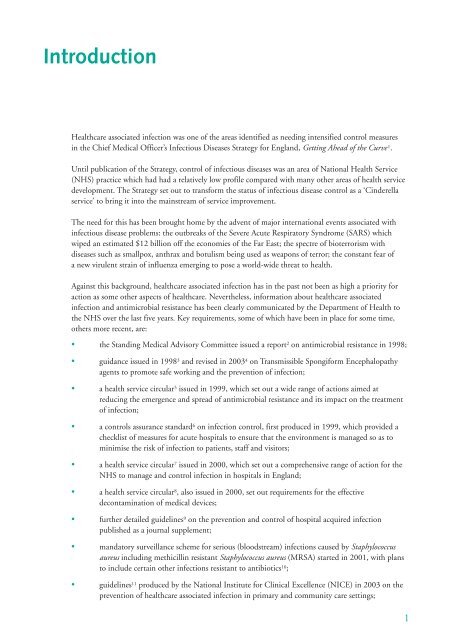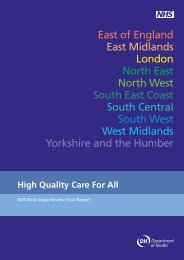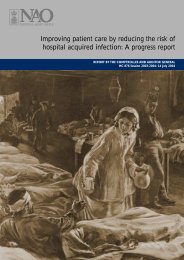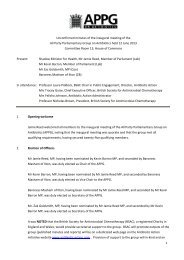78114-DoH-Winning Ways - Antibiotic Action
78114-DoH-Winning Ways - Antibiotic Action
78114-DoH-Winning Ways - Antibiotic Action
Create successful ePaper yourself
Turn your PDF publications into a flip-book with our unique Google optimized e-Paper software.
Introduction<br />
Healthcare associated infection was one of the areas identified as needing intensified control measures<br />
in the Chief Medical Officer’s Infectious Diseases Strategy for England, Getting Ahead of the Curve 1 .<br />
Until publication of the Strategy, control of infectious diseases was an area of National Health Service<br />
(NHS) practice which had had a relatively low profile compared with many other areas of health service<br />
development. The Strategy set out to transform the status of infectious disease control as a ‘Cinderella<br />
service’ to bring it into the mainstream of service improvement.<br />
The need for this has been brought home by the advent of major international events associated with<br />
infectious disease problems: the outbreaks of the Severe Acute Respiratory Syndrome (SARS) which<br />
wiped an estimated $12 billion off the economies of the Far East; the spectre of bioterrorism with<br />
diseases such as smallpox, anthrax and botulism being used as weapons of terror; the constant fear of<br />
anew virulent strain of influenza emerging to pose a world-wide threat to health.<br />
Against this background, healthcare associated infection has in the past not been as high a priority for<br />
action as some other aspects of healthcare. Nevertheless, information about healthcare associated<br />
infection and antimicrobial resistance has been clearly communicated by the Department of Health to<br />
the NHS over the last five years. Key requirements, some of which have been in place for some time,<br />
others more recent, are:<br />
• the Standing Medical Advisory Committee issued a report 2 on antimicrobial resistance in 1998;<br />
• guidance issued in 1998 3 and revised in 2003 4 on Transmissible Spongiform Encephalopathy<br />
agents to promote safe working and the prevention of infection;<br />
• a health service circular 5 issued in 1999, which set out a wide range of actions aimed at<br />
reducing the emergence and spread of antimicrobial resistance and its impact on the treatment<br />
of infection;<br />
• a controls assurance standard 6 on infection control, first produced in 1999, which provided a<br />
checklist of measures for acute hospitals to ensure that the environment is managed so as to<br />
minimise the risk of infection to patients, staff and visitors;<br />
• a health service circular 7 issued in 2000, which set out a comprehensive range of action for the<br />
NHS to manage and control infection in hospitals in England;<br />
• a health service circular 8 , also issued in 2000, set out requirements for the effective<br />
decontamination of medical devices;<br />
• further detailed guidelines 9 on the prevention and control of hospital acquired infection<br />
published as a journal supplement;<br />
• mandatory surveillance scheme for serious (bloodstream) infections caused by Staphylococcus<br />
aureus including methicillin resistant Staphylococcus aureus (MRSA) started in 2001, with plans<br />
to include certain other infections resistant to antibiotics 10 ;<br />
• guidelines 11 produced by the National Institute for Clinical Excellence (NICE) in 2003 on the<br />
prevention of healthcare associated infection in primary and community care settings;<br />
1





